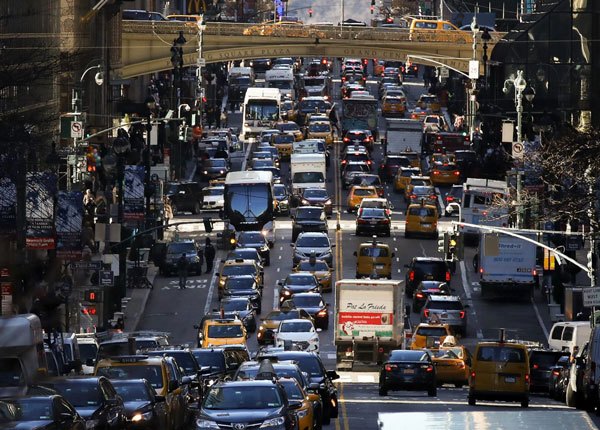
City Driving Strategies: Saving Time While Minimizing Driving Risks
Updated Dec. 11, 2020With so many other road users and hazards to contend with, driving in the city can be stressful and dangerous. Safe city driving relies on your ability to spot hazards and react to them appropriately. With appropriate training, you can make sure you always have time to avoid an accident. Check out our strategies for safe city driving!
Reduce your speed
Cutting your speed is one of the smartest things you can do when driving around a city. Driving at a moderate speed will allow you more time to take in the information around you and react to hazards, should they arise. However, it is essential not to reduce your speed so much that you hold up the flow of traffic and become a hazard for other drivers. Consider taking an alternative route if you cannot keep pace with city center traffic.
Position the vehicle correctly
City drivers must learn to position their vehicle correctly within a lane and in relation to other motorists. Optimal positioning should maximize your view of the road without disrupting the flow of traffic. Avoid tailgating or driving in another vehicle’s blind spots, as this would leave you less time to react to hazards and more susceptible to collisions.
City streets are typically too narrow for drivers to switch lanes suddenly, so you will not have this option available to you in an emergency. With the possibility of evasive driving ruled-out, your only option is to avoid a collision by leaving as much space around your vehicle as possible.
Scan for hazards
Motorists must get into the habit of scanning ahead when driving in the city. Ideally, you should check at least a block ahead of your current position for potential hazards. Of course, you must not do this at the expense of the area around your vehicle! In the city, hazards can appear anywhere at any time. Try to alternate between checking the area around your vehicle and scanning the road ahead.
If you are staying on the same street for several blocks it is best to remain in the center lane wherever possible, as this is the lane least likely to be occupied by turning vehicles, buses, cyclists and motorcyclists.
Stick to major streets
When planning your route across the city, try and stick to major roads. This is particularly important if you do not know the area very well. Major thoroughfares are built to keep traffic flowing. They generally have two or more lanes moving in the same direction, left-turn lanes, center dividers and clearer signage than smaller side streets. Plus, most intersections on major roads are controlled by traffic signals.
Driving on side streets is often more dangerous despite there being less traffic around. This is because there are fewer traffic signs, intersections are unlikely to be controlled by lights and other motorists may not drive with as much caution as they would on busier roads.
Cover the brake
The stop-and-go nature of city driving lends itself to cover braking. This will make it easier to slow down quickly and smoothly when hazards arise. When driving in stop-start traffic or in another situation which might require a sudden stop, take your foot off the accelerator and float it just above the brake pedal to shorten your reaction time. You can transfer it back to the gas pedal when you need to accelerate or once the threat has passed.
Here are some city driving situations in which cover braking should be used:
- 1

In heavy traffic, when the vehicle in front of you may brake suddenly.
- 2

When passing parked cars.
A pedestrian may step out into the road from in between the vehicles or open their driver’s side door without warning. - 3

If a flashing crosswalk signal indicates that the light is about to change from green to red, as you approach it.
- 4

When there are many brake lights active in the row of traffic ahead of you.
Do not ride the brake
When covering the brake pedal in a hazardous city driving environment, it is all too easy to “ride the brake” by accident. Resting your foot on the brake pedal – however lightly – is dangerous and bad for your vehicle. Even a very gentle touch on the brake could activate your brake lights and confuse drivers behind you. Plus, you will find your brakes wear out and require maintenance far sooner than they should.
Always think ahead
It pays to think ahead when driving in the city. If possible, plan your route out ahead of time. It will be easier to merge, make turns, and focus on checking for hazards if you already know which roads you will be taking. In addition, avoid waiting until you reach your destination to look for a suitable parking space. It is better to park a short distance away than it is to arrive at your destination and compete with other drivers for limited spaces.




